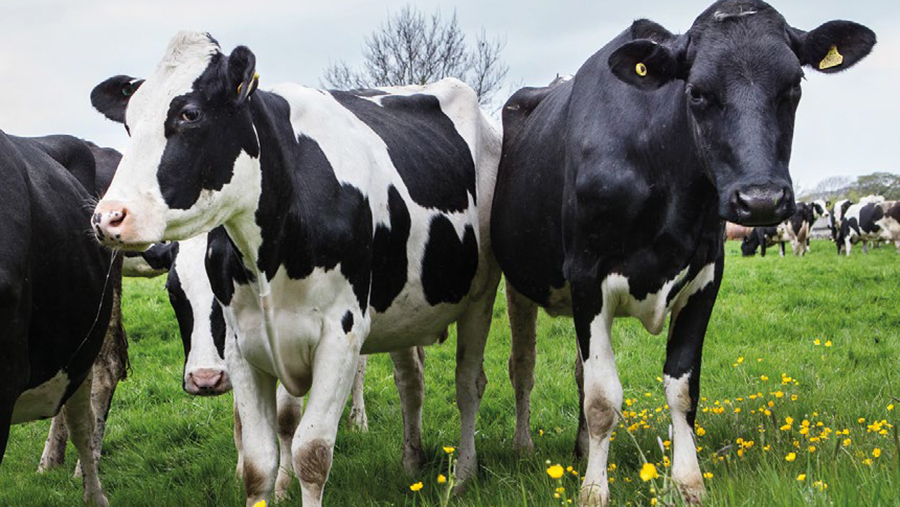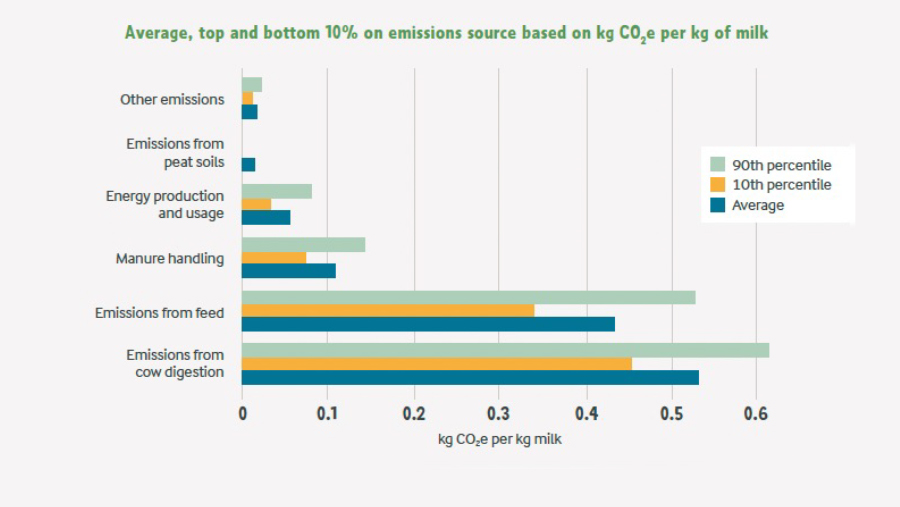Advertiser content
Reducing the carbon footprint of your dairy farm
 © Arla Foods
© Arla Foods Just as no two cows are the same, likewise no two dairy farms can take same approach when it comes to reducing its carbon emissions.
But while the unique geography of a farm will determine the type of feed and farming system a farm can operate, data collated from Arla farmers shows that there are common key areas which contribute the most to on-farm emissions:
The chart below shows a breakdown of the emissions sources on Arla dairy farms in the UK, based on the first-year data gathered from its Climate Check programme.
Digestion and feed are by far the greatest sources of emissions across dairy farms and therefore offer the highest opportunity for reductions in overall emissions in the short term.
Managing protein content
Data shows that optimising the feed ration not only impacts productivity but can also result in significant improvements to a farm’s carbon footprint.
“Getting cow diets right reduces the risk of overfeeding protein, which also reduces the risk of unnecessary greenhouse gas emissions from excess protein in slurry,” explains Jo Lawrence, Senior Manager – Agri Commercial Support, Arla.
“The area of feed efficiency, effectively producing more milk with less feed, has the potential to deliver big environmental (and financial) gains.”
High-quality fibre sources
As well as protein, it is also important to look at the fibre in cow diets. Products from the digestion of fibre contribute substantially to methane production, with coarse fibre being particularly hard to digest.
“Using good quality sources of fibre will help to both protect the cow’s stomach and manage emissions. For example, taking the first cut one week earlier than normal and then maintaining the same number of weeks between cuts can reduce the grass fibre content by 2-4%, making it easier for cows to digest and therefore reducing methane emissions,” continues Jo.
“Looking at the highest and lowest 10% of farmers in each of the key emissions areas shows the significant differences between farms and the potential opportunities available for reduction.
However, when pin-pointing what’s achievable, it’s important to study the farms with the lowest total carbon footprint as gains in one area can result in losses in another.
“Looking at the data, it clearly highlights digestion and feed emissions as areas we need to address first, but we must remember that we need to reduce emissions from all areas if we want to achieve net zero farming,” concludes Jo.
“We also must be mindful that some of the technology that will help us reduce our environmental impact may not yet have been invented, which is why Arla is taking part in numerous innovation trials to test some of the technology coming through.
That said, there is always more each of us can do and circumstances the data shows that there is no one way to farm sustainably. It’s the farmers who balance their resources effectively that create farms with the lowest amount of greenhouse gas emissions.”
Provided by
Arla Foods is a global dairy cooperative owned by 8,500 dairy farmers, around 1,900 of which are in the UK.
Dating back to 1881, Arla’s purpose is to secure the highest value for its farmers’ milk, while creating opportunities for their growth. As a company owned by farmers, all our profits are returned to our farmer owners.
Arla Foods UK is the largest dairy cooperative in the country and is the UK’s largest supplier of organic dairy products and have UK favourite brands like Arla Cravendale, Lurpak and Anchor.
The UK business has a team of approximately 3,600 colleagues located at its dairies, creameries, distribution centres and head office.

